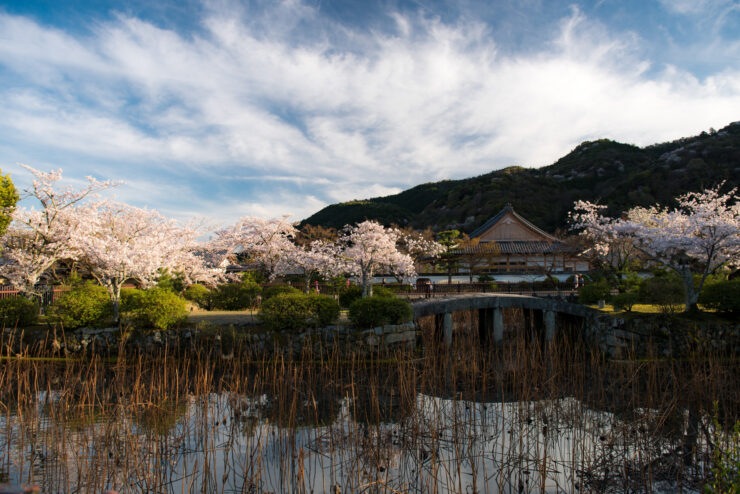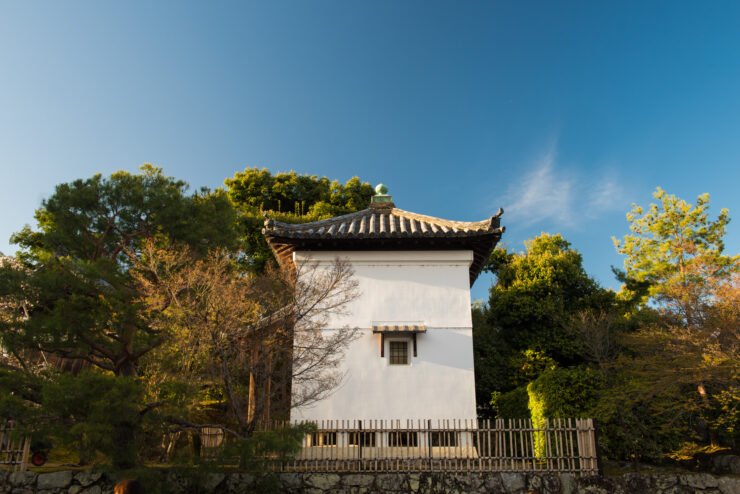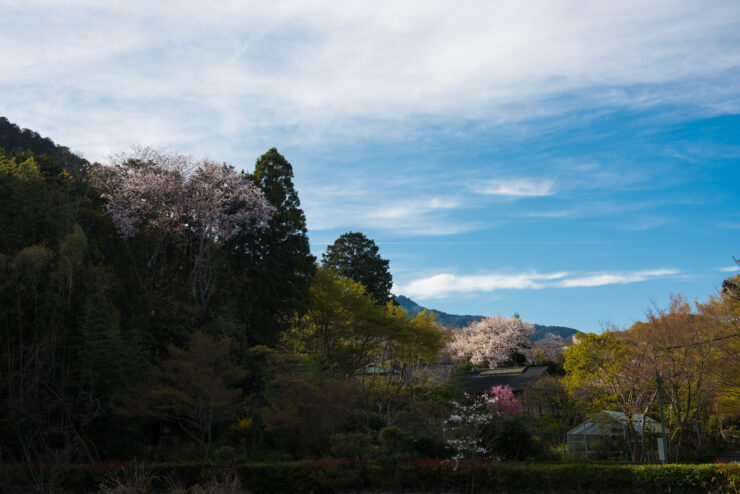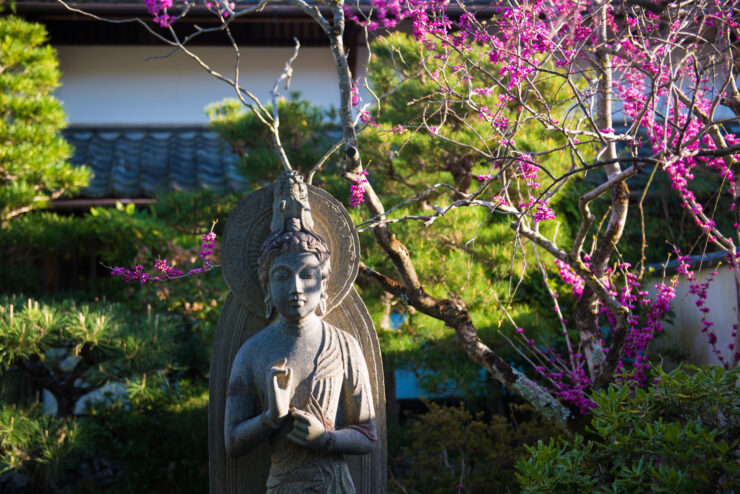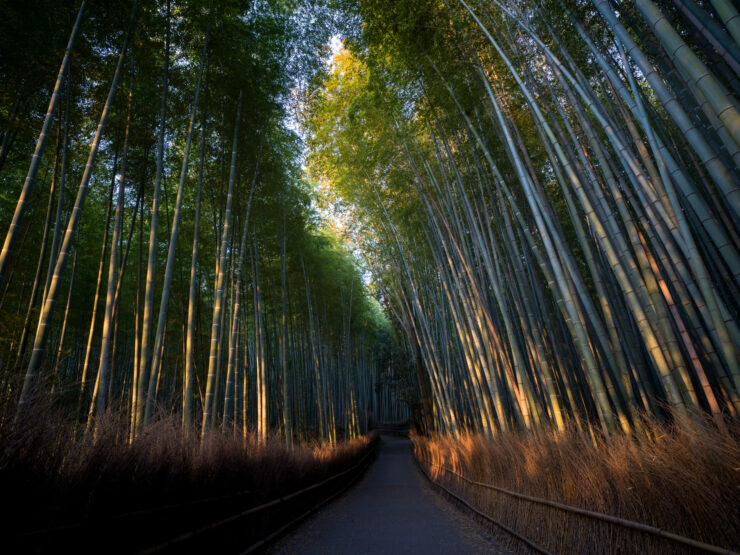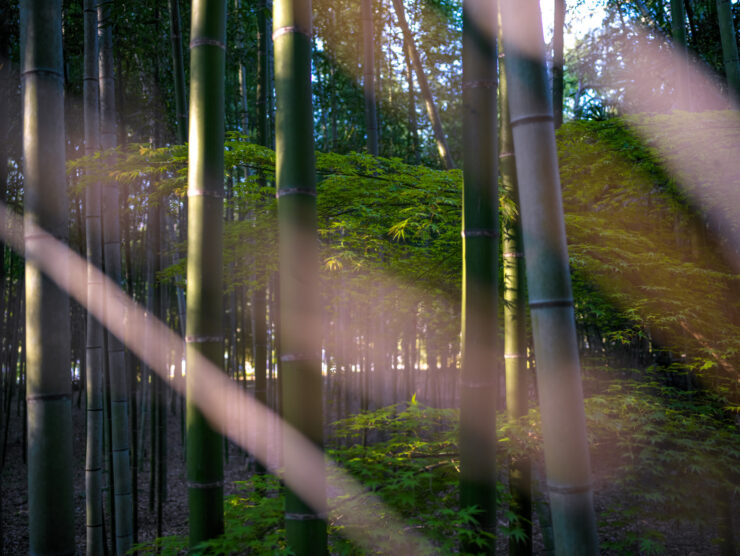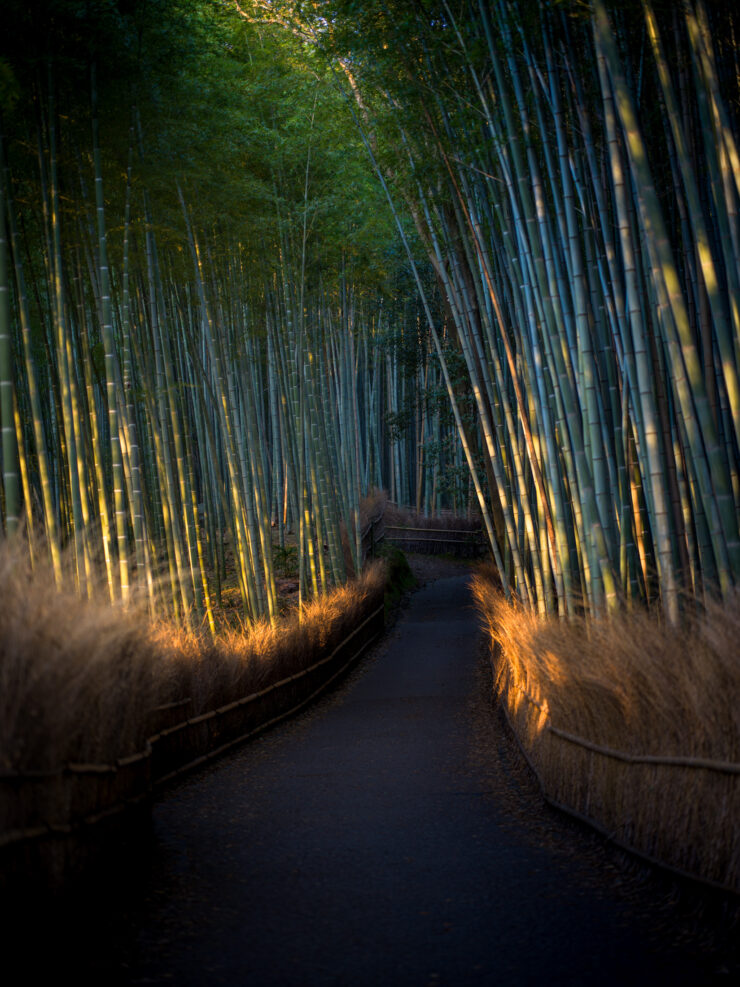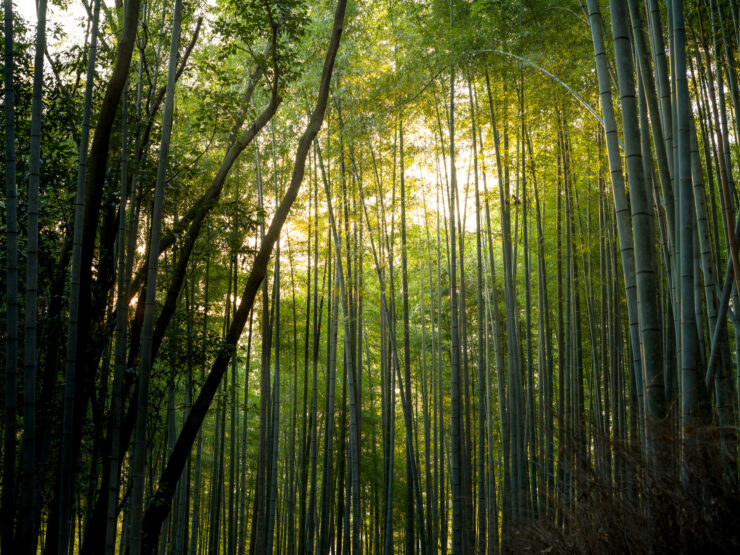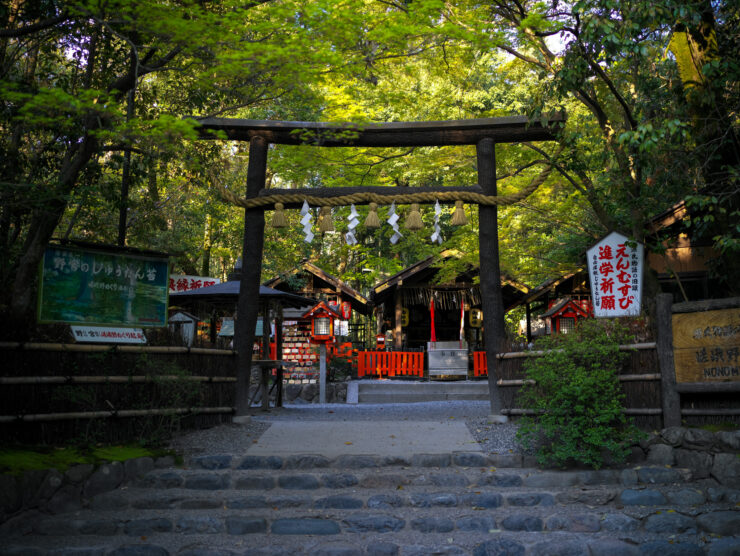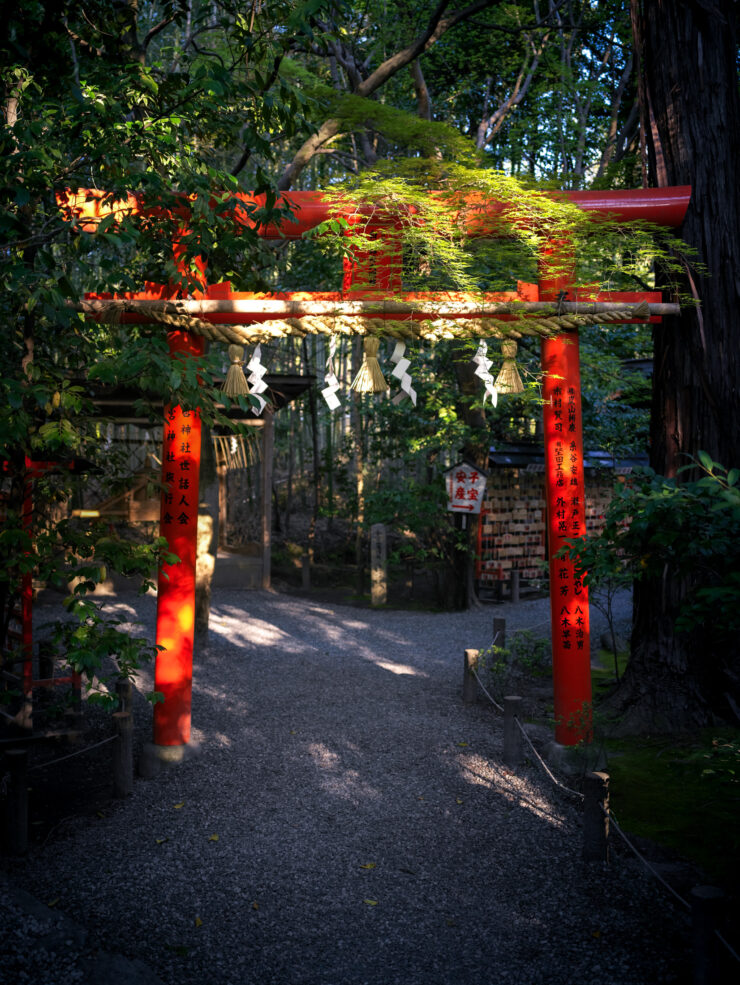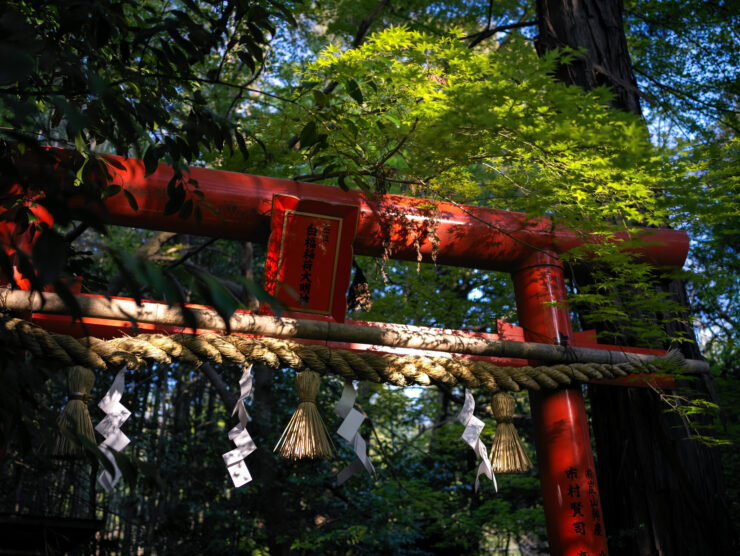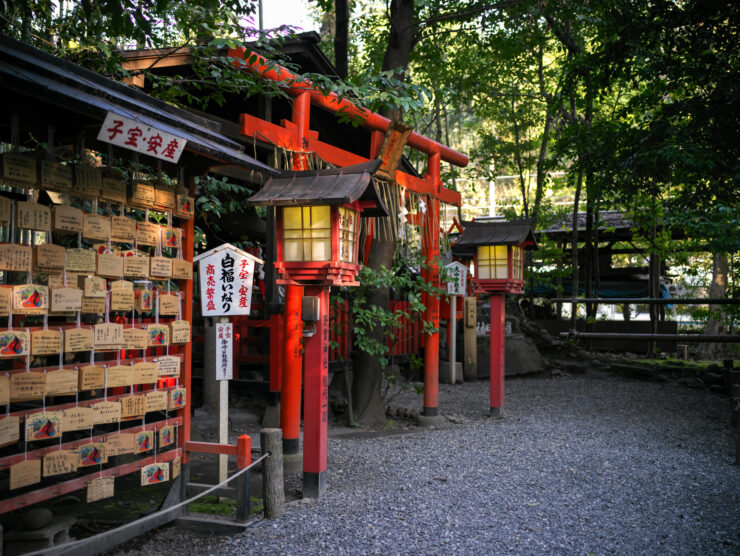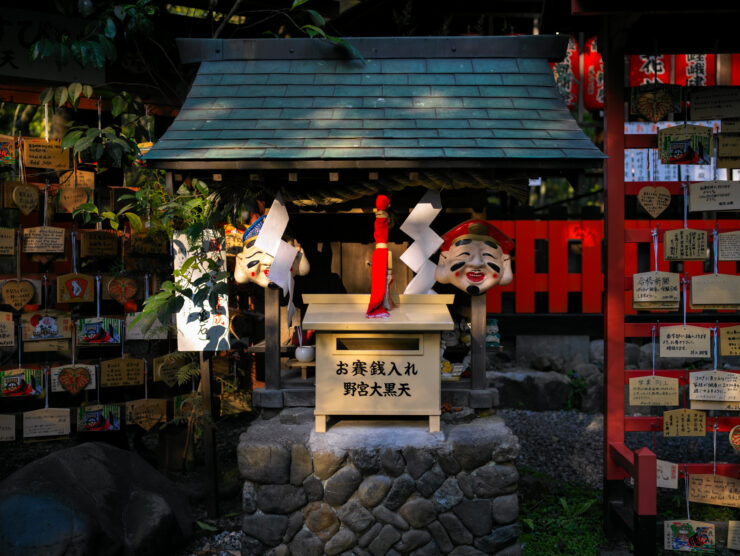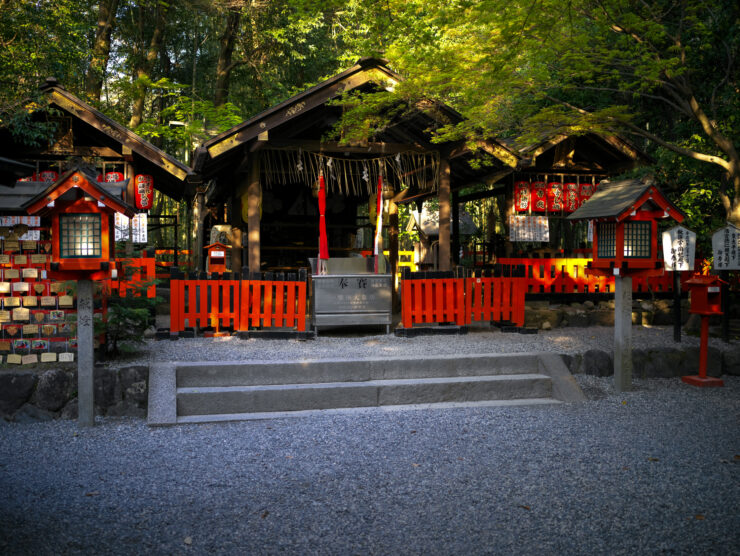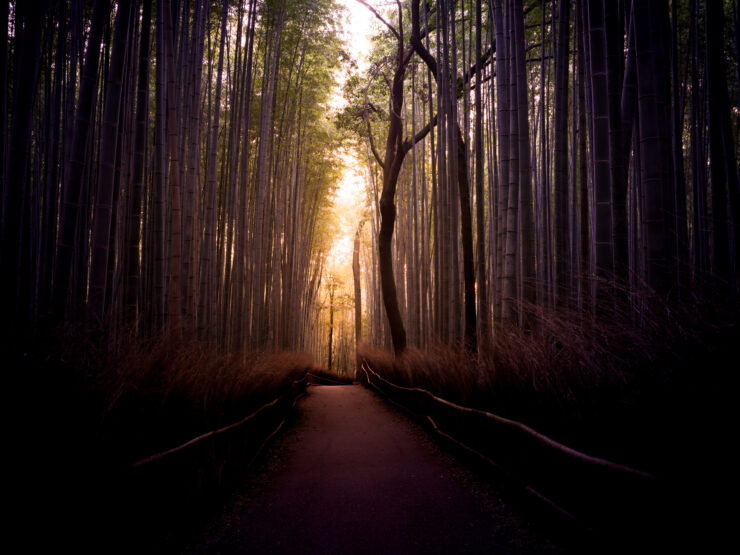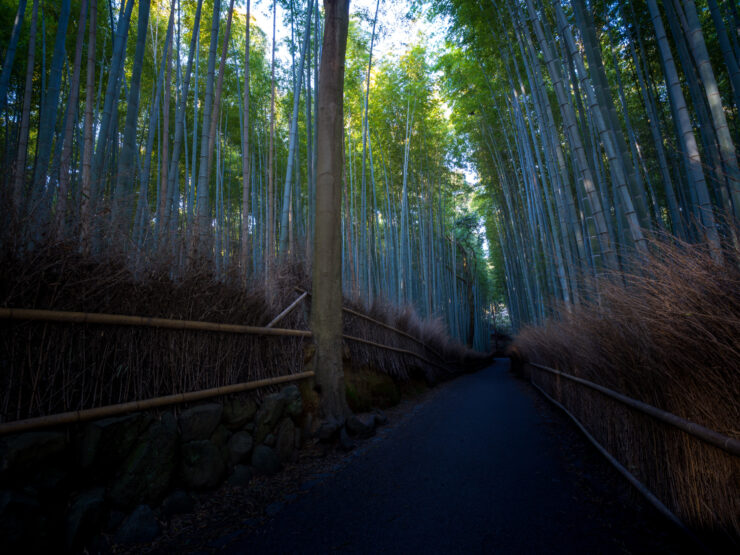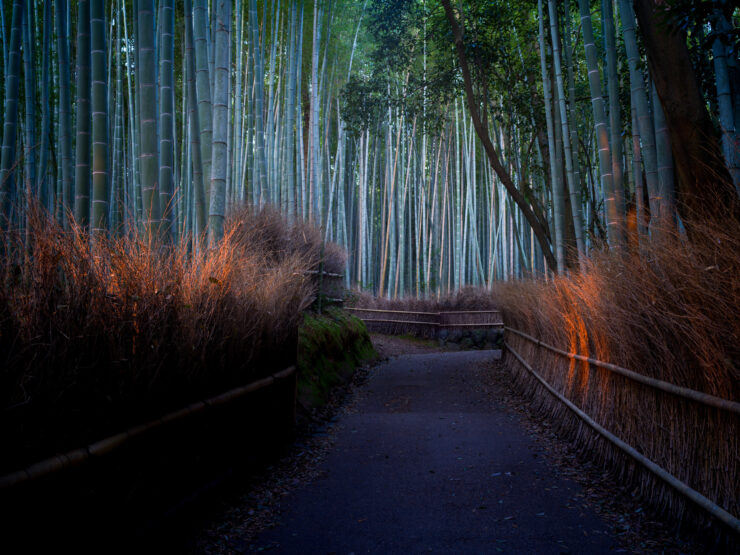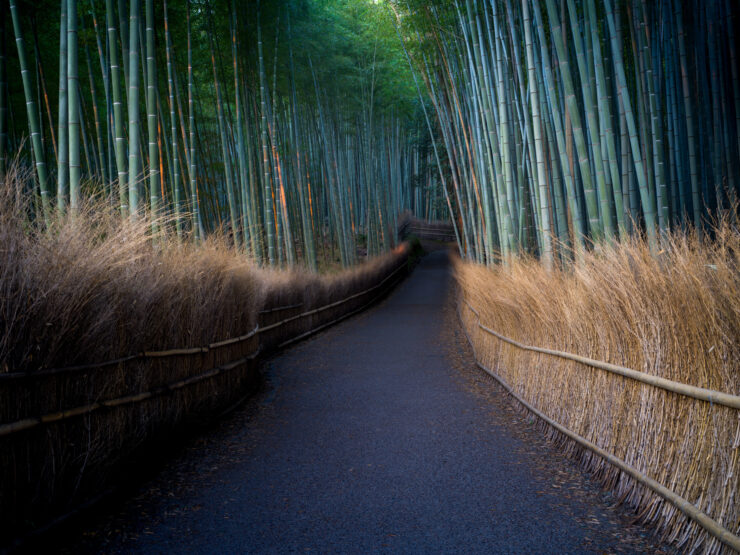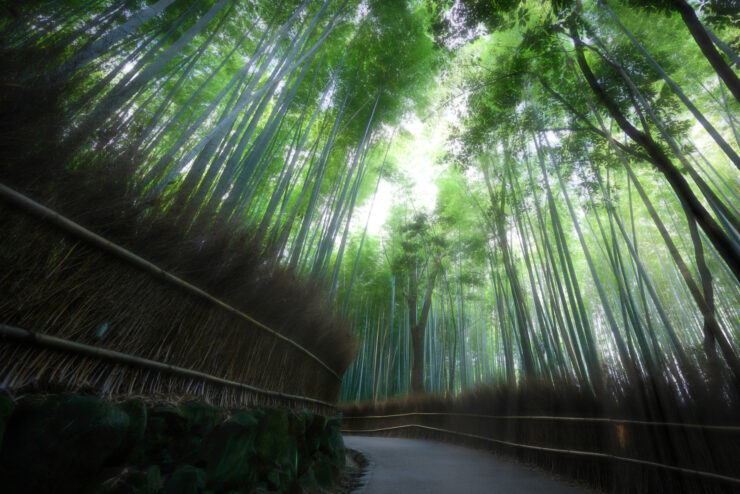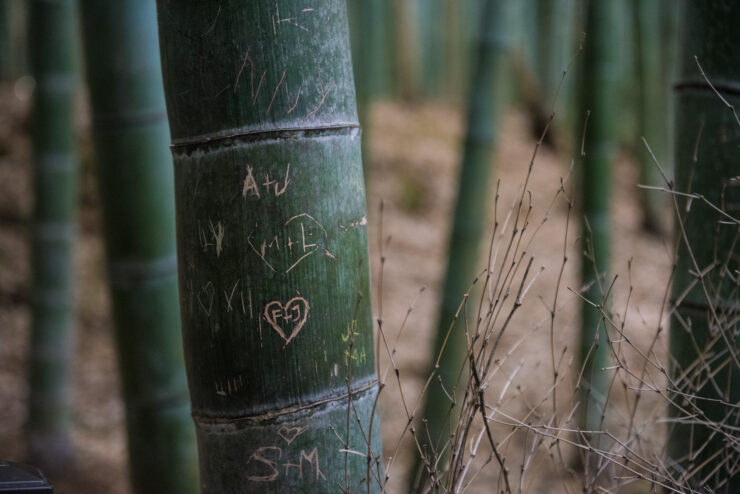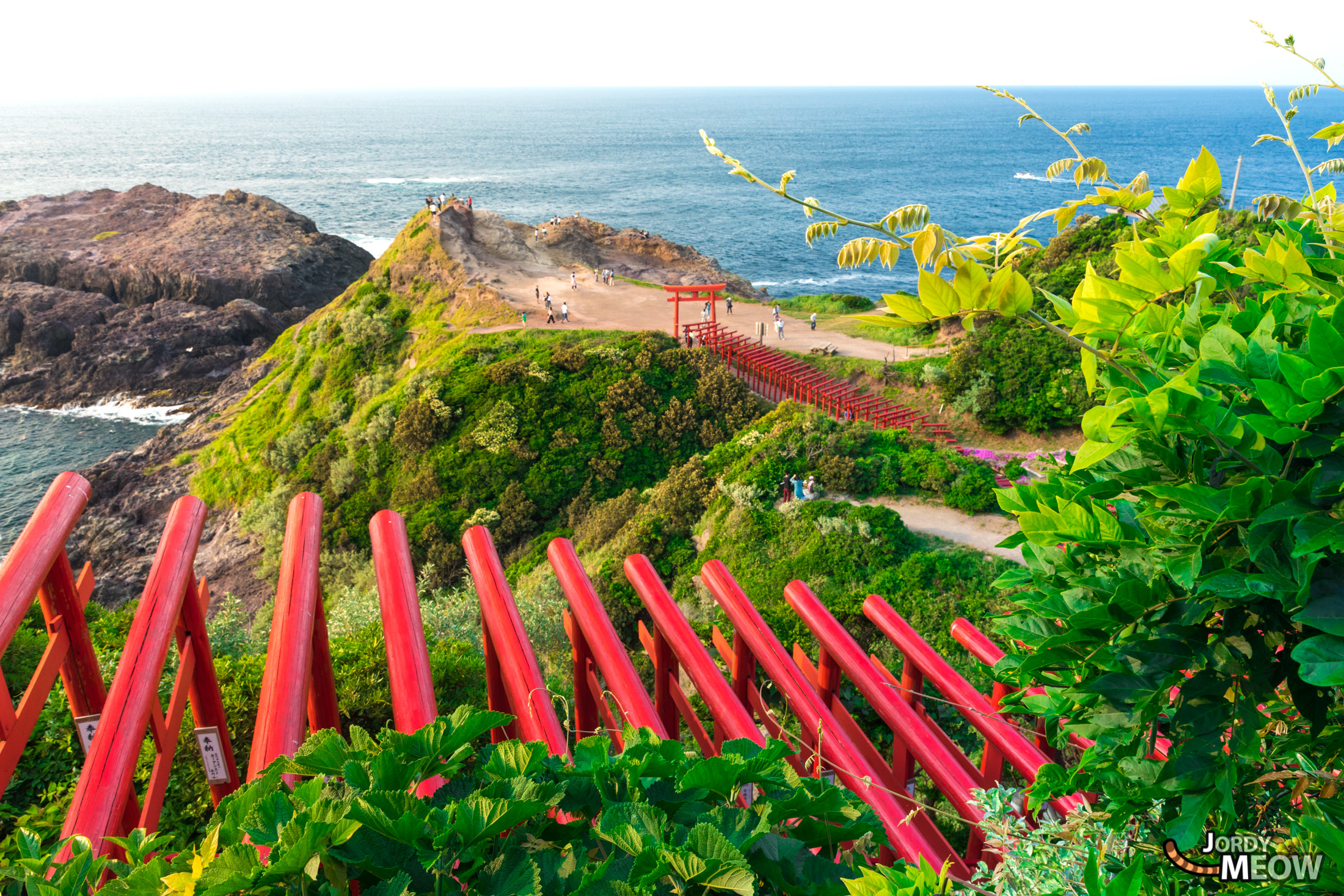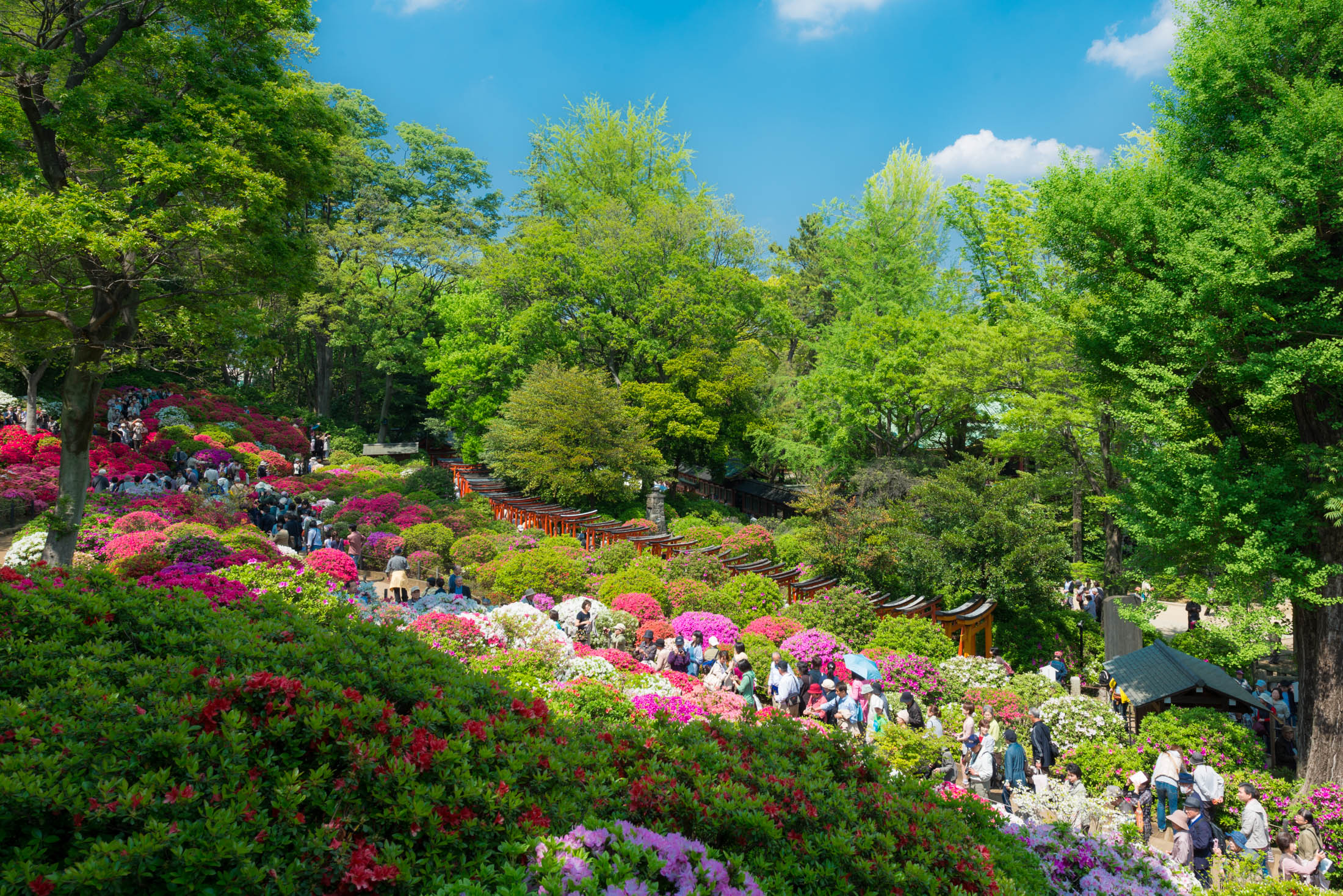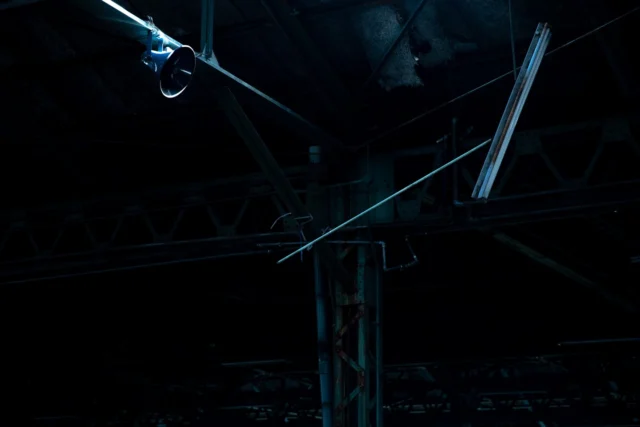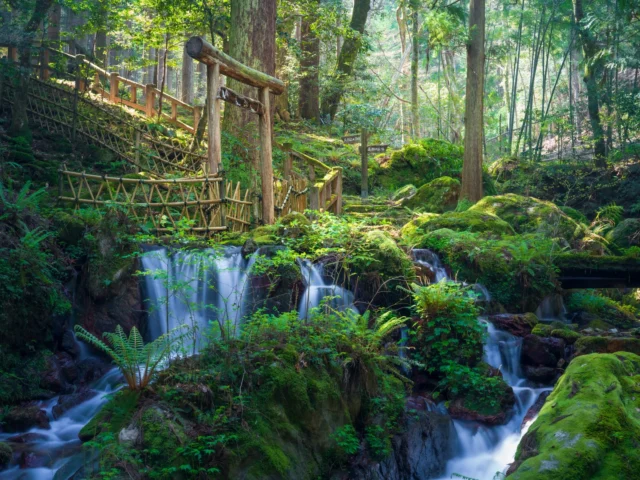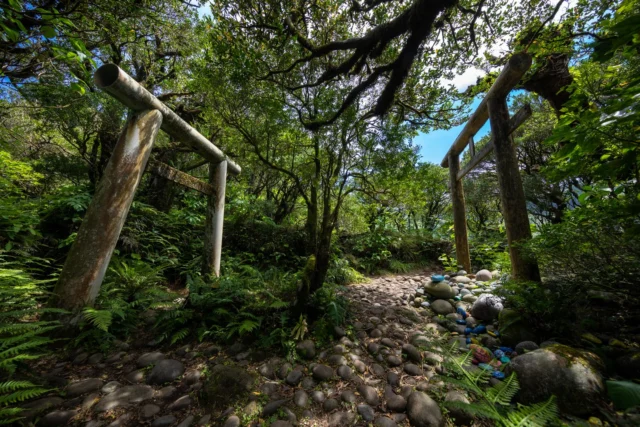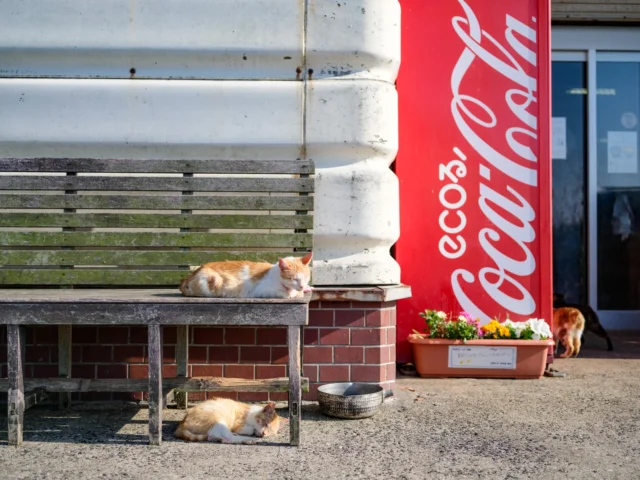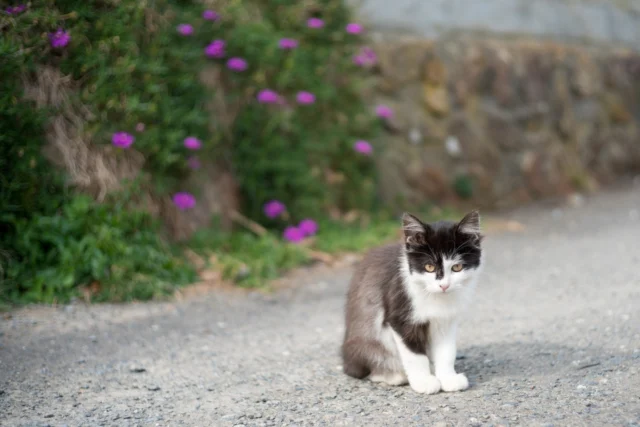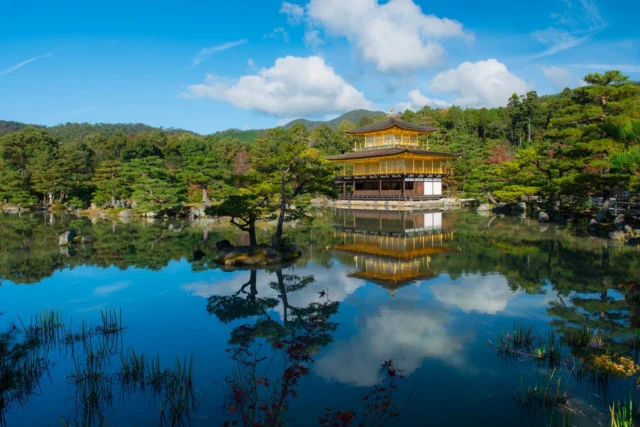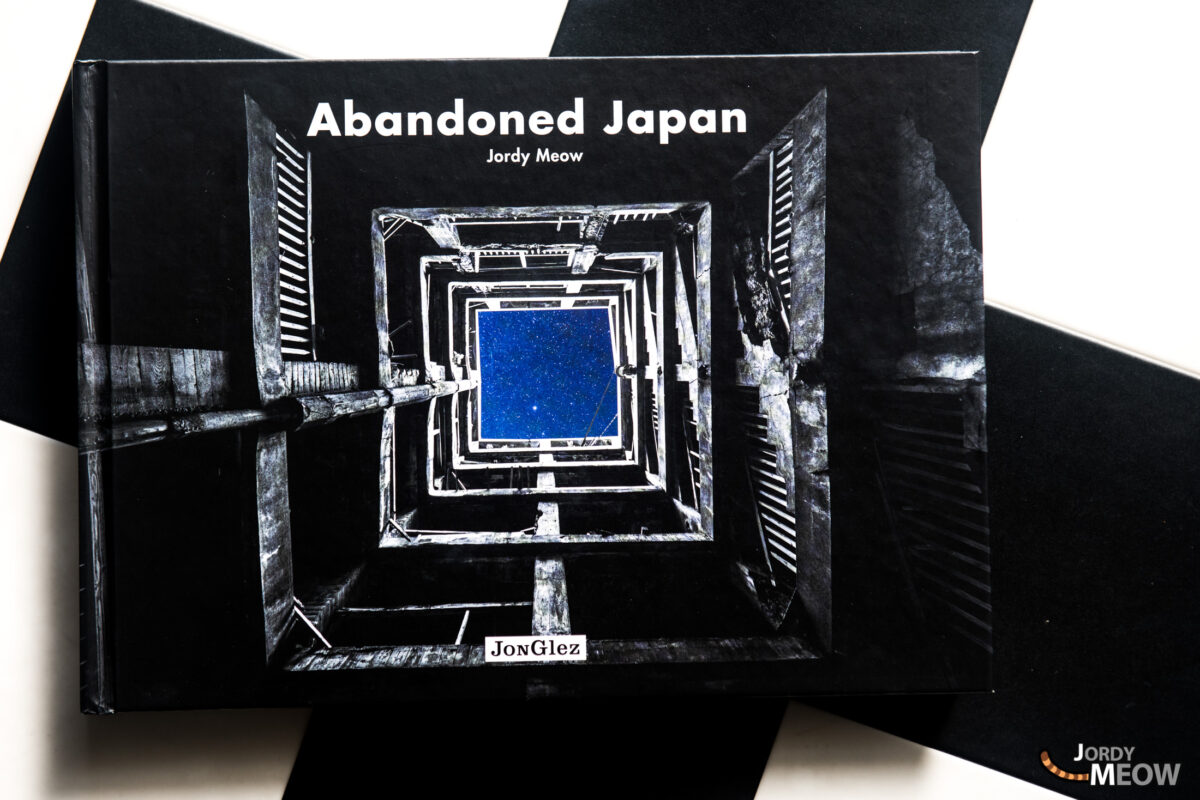The masses of tourists drawn to this site can visit the iconic Togetsukyō (Bridge to the Moon), explore the many temples and shrines, and stroll through the bamboo grove.
The general belief is that bamboo first arrived in Japan in 801 CE, brought back from Tang dynasty China by a Buddhist priest (another hypothesis is that it was introduced by Zen master Dogen in the Kamakura shogunate, 1192–1333).

During the Heian period from 794 to 1185, Emperor Saga planned a mountain villa for his retirement: Saigai (forerunner of Daikakuji temple). The Sagano area was then a hunting and recreation ground for emperors and imperial princes. We don’t know the precise reasons behind the development of bamboo. Some hypothesize that the wood was widely used for construction materials (especially for gardens) so bamboo was planted as a local supply of raw materials.
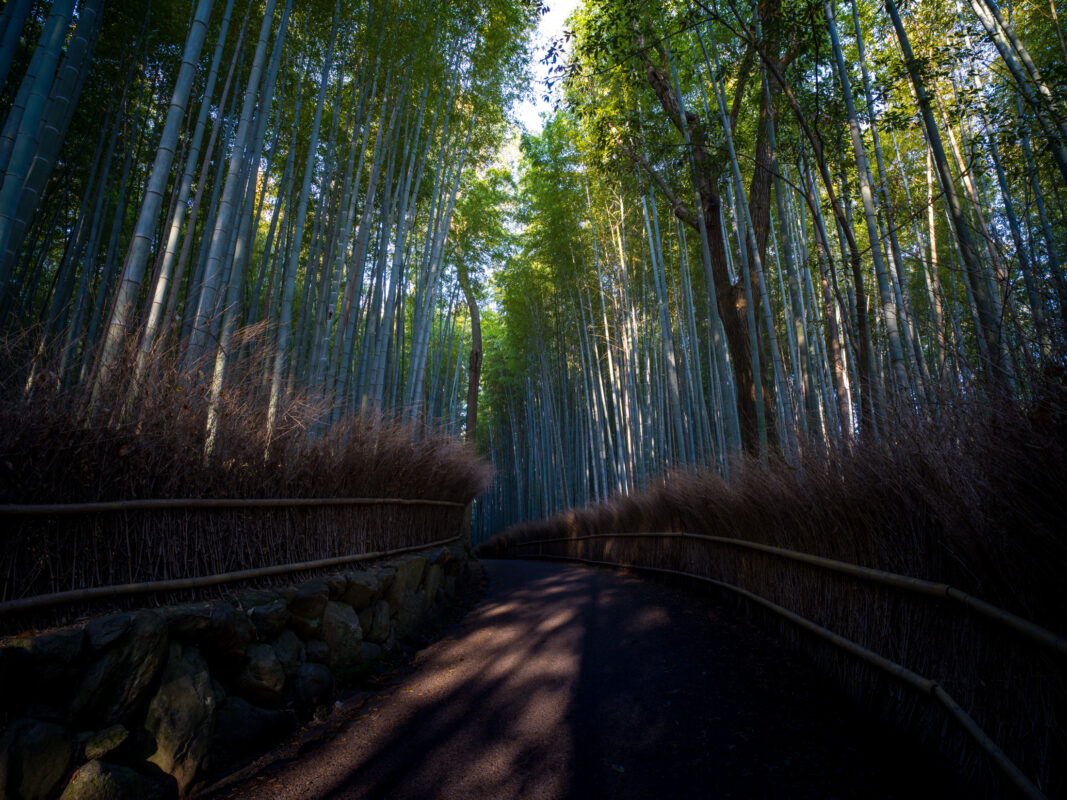
Bamboo groves and plantations were characteristic of the Sagano landscape until the early Showa period (1926–1989), but rapid post-war urbanization completely transformed the area. Legend has it that the writer Junichiro Tanizaki was infuriated when a bamboo grove was felled near the Nonomiya shrine. Opposition movements grew to protect the wilderness and various areas of Sagano were listed as Traditional Buildings Preservation Districts.
So the “Chikurin-no-michi” 竹林の道 (“bamboo path”) has been preserved, to the delight of modern-day tourists. The path stretches for about 500 metres between Okochi Sanso, Tenryuji Temple (a World Heritage site) and Nonomiya shrine. This lesser-known ancestral Shinto shrine used to welcome young girls from the imperial family who came to purify themselves before entering into service at Ise Jingu shrine. The shrine, as noted in the 11th-century novel The Tale of Genji, is still popular with young girls who come to pray for success in love.
Every year in December, Arashiyama organizes the Hanatouro “path of flowers and light” festival, which illuminates the surroundings of Togetsukyō and the bamboo grove. The twinkling lanterns installed along the route lend a magical atmosphere so different to daytime.
Sagano Bamboo Grove is not just a visual experience. You should also listen to its music (along with Rakusei, another bamboo grove in Kyoto) among the places selected to be preserved by the Ministry of Environment as one of the 100 Soundscapes of Japan.
And for more awesome content about Japan, follow Jordy Meow on Instagram ! 🎵


